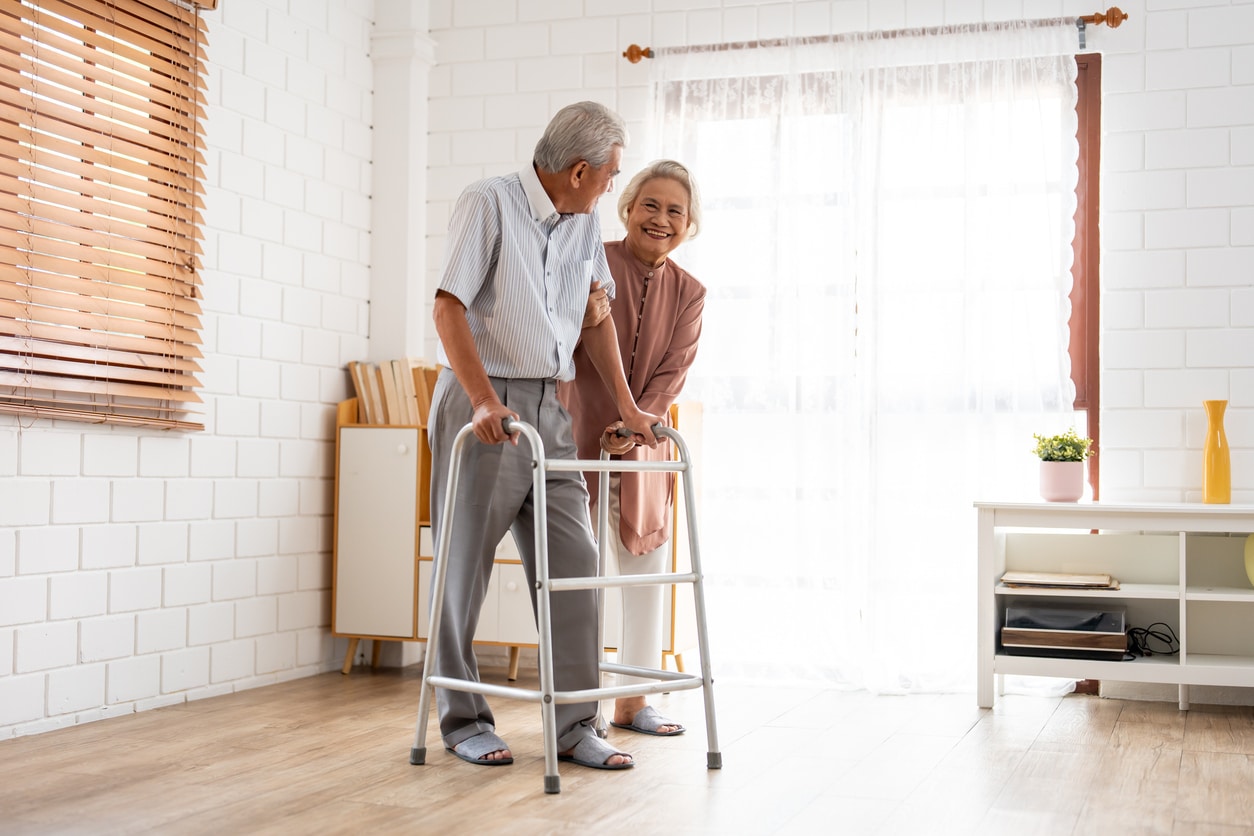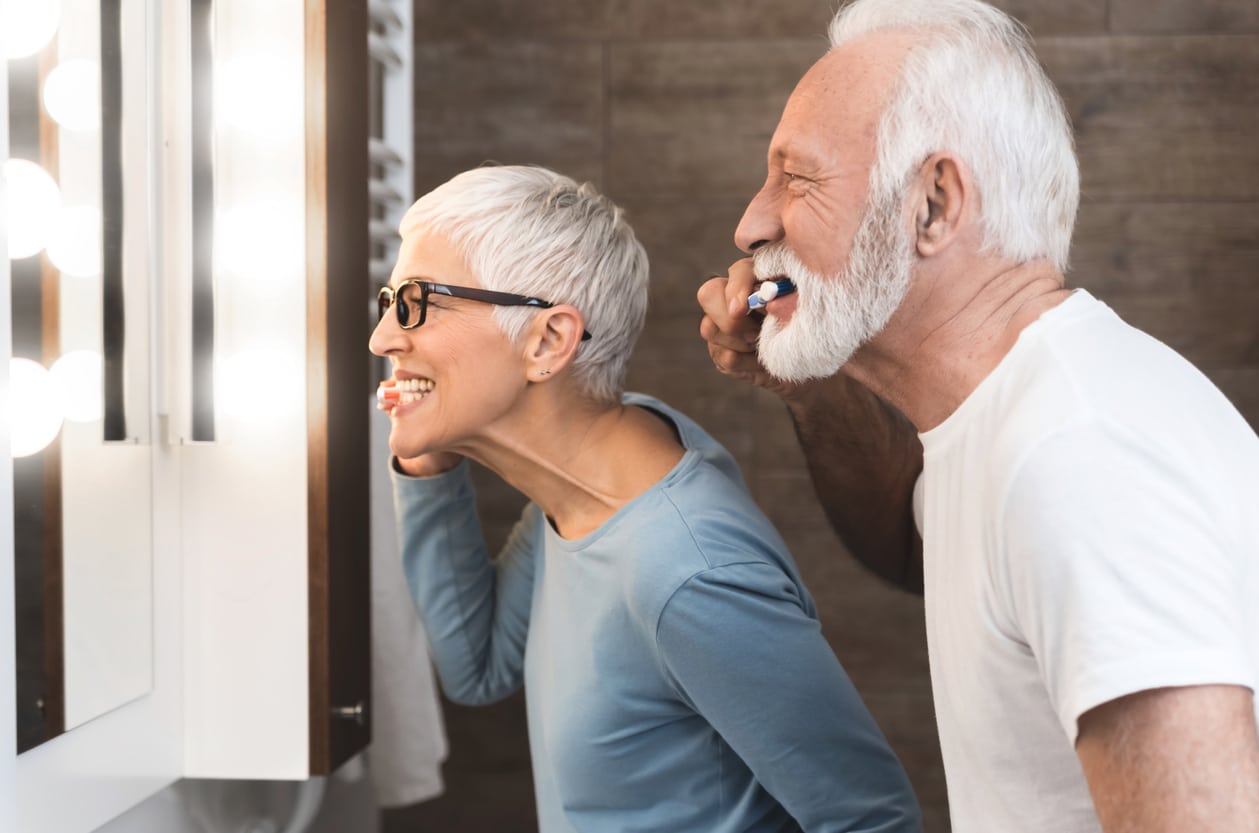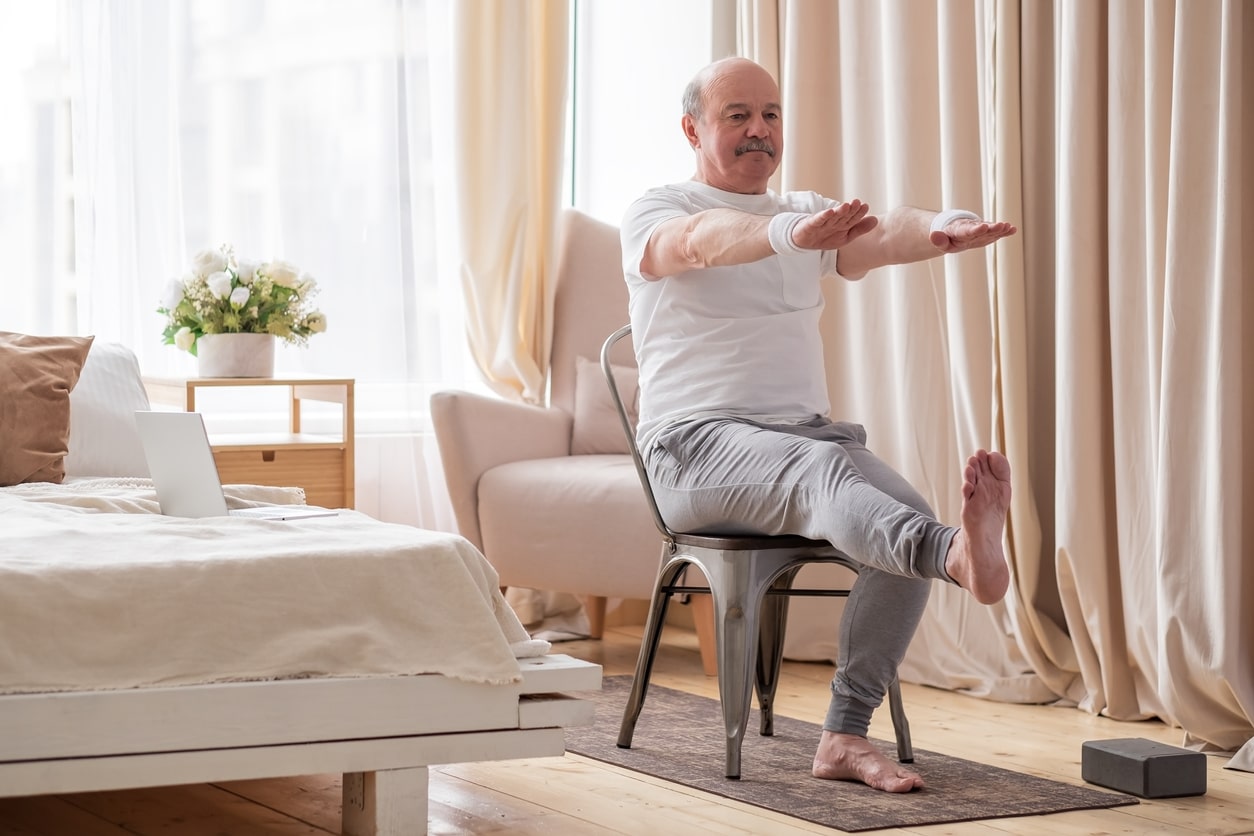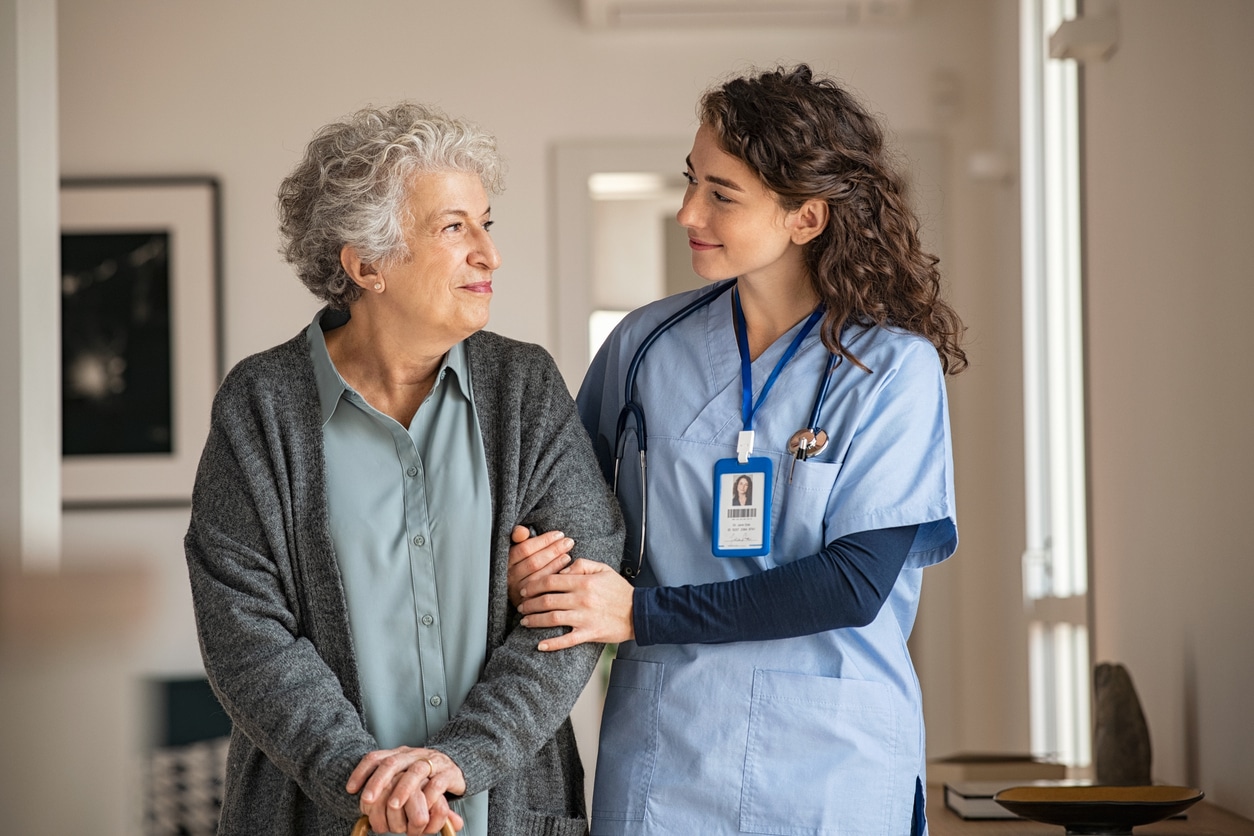According to the National Institutes of Health, more than 1.6 million older adults in the US go to the emergency room for fall-related injuries each year. Many of them never return to their own homes again, instead moving to assisted living communities or nursing homes because of injuries they sustained in the fall, their fear of falling, or their family’s fear that they may fall again.
The fear of falling is one of the most significant factors that increase the risk of a fall, and this fear is particularly prevalent in those who have fallen previously. Because the fear of falling is such a significant factor in older adults’ fall risk, addressing it directly with both the senior and his caretakers offers the best opportunity for preventing or reducing falls. Discussion about the fear of falling should be coupled with education about other factors that could increase the risk of falling, including decreased visual acuity, weakening muscles, unsafe home settings, medications, and other risks related to the normal aging process. Here are some ways to reduce fears and fall risks among seniors who still live at home.
Understand the Value of Confidence
Gaining confidence is one of the best ways to reduce fear of any kind. One way older adults with a fear of falling can increase their confidence is to work at improving their strength and balance. There are exercise classes and programs specifically designed to improve balance and increase strength. Many of these classes include a free assessment at the beginning and end of the class to help each person understand her individual risk and demonstrate how much the exercises can help reduce that risk. Local Area Agencies on Aging can direct seniors to classes in their area. Some of the classes will also address the best way to prevent falls, how to land more safely if a fall does occur, and how to safely get up from a fall. For seniors who are unable to travel to classes, there are programs available in video or DVD format like Fall Stop…Move Strong.
Establish a Safe Home Environment
Other interventions that can help reduce the risk of falling include having family or caretakers assess the senior’s home safety and make any necessary adjustments to the home. The Administration on Aging offers a number of tips on making the home safer for older adults, some of which are detailed below.
Remove Throw Rugs
This may be a tough one for caretakers of a senior who takes pride in how she’s decorated her home. When the rugs have been a part of the decor for many years, it can take some savvy negotiating to help the senior understand that the increased safety removing the rug provides is well worth the change in aesthetics. If she’s insistent that the rug is necessary, the family can try to find one that is heavy enough to stay down on its own or one with a rubber backing that will not be as likely to fold up when it’s walked on. Two-sided tape can also help secure the edges of a rug, but make sure that the rug is secured on all edges.
Mark Steps With Bright Tape
Even if someone has lived in his home for decades, reduced visual acuity or burned-out or hard-to-reach lights can make it harder to see where one step begins and another ends. While it might not be aesthetically appealing, a strip of bright-colored tape on the edge of each step can help a senior safely navigate stairs and allow him to remain safe and independent in his home.
Tighten Loose Carpets
All it can take is just one little bump in the carpet to trigger a fall, even for someone who is stable on his feet. Most of us can recover when we’re strong, but with slower reflexes and weaker bones and muscles, the impact of catching a foot on a wrinkle in the carpet can be devastating for a senior. Talk to the family about hiring a carpet professional to stretch and secure wall-to-wall carpeting that has shifted over the years. This can be a minimal investment compared to the cost of hospitalization.
Install Handrails on Stairs and Steps
Stairs in particular can pose a fall risk or be an area that increases a senior’s fear of falling. Caretakers should make sure existing stair railings are tightly secured and accessible, and install new ones where they are needed.
Improve Lighting
Discuss the option of adding or replacing lights in dimly lit stairwells and hallways with the seniors and family. If outdoor space is frequently accessed during the evening or early morning hours (perhaps when letting a pet out), they should also consider installing motion-sensor lighting so that any potential barriers are clearly visible.
Install Grab Bars
An important change that families can make is to install grab bars in slippery areas such as the shower and bathroom. Encourage the senior to use them instead of towel racks or shower doors for support as she gets in and out of the tub or shower. Other adaptations include a shower bench and a hand-held shower to reduce standing time in the shower. Frequently used items can also be relocated to lower shelves and cabinets so that ladders and step stools are not necessary.
There are also other things to consider when discussing how to minimize fall risk with seniors and their families. Here are some tips you can offer them:
- Move sturdy furniture so that the senior can use it for support if handrails are not practical.
- Remove barriers to access things like curtain pulls, light switches, and telephones.
- If getting in and out of bed or the potential of falling out of bed is an issue for the senior, consider purchasing under-the-mattress side rails that can serve as added support.
- Clean up all spills right away and dry the area thoroughly to minimize the risk of slipping.
- Medications can also be a big factor in fall risk. If the senior is taking any medications, particularly new medications, it is important for caretakers to pay close attention to changes in behavior, gait, overall health, and strength. Polypharmacy (a relatively new term describing the use of multiple medications) is becoming an increased risk for seniors. This is essentially the overprescribing of medications that are unnecessary or that conflict with one another. If the senior has multiple physicians, especially if she uses different pharmacies to fill her prescriptions, it’s important to have one pharmacist review her complete list of medications to see if the combination of meds might be causing unnecessary falls or other health risks.
Wear Safe Shoes and Clothing
Shoes and clothing that do not fit well can also be a factor in fall risk. The family should examine the senior’s shoes and clothing and consider where the shoes will commonly be worn. While sturdy, rubber-soled shoes are great on pavement and for walking outside or on potentially slick surfaces, if the senior has a tendency to shuffle or struggles to pick up his feet as he walks, the rubber surface can sometimes catch on a carpet or threshold and actually cause a fall. Here are some other things for seniors and caretakers to keep in mind:
- Shoes that should be avoided if at all possible are anything with heels of more than half an inch, mules, sandals and slippers with no back closure, and anything that doesn’t fit well.
- Clothing can become an unexpected fall hazard if someone loses or gains weight, causing a change in fit.
- Pants that no longer fit well could potentially droop and hang around the senior’s ankles and can create a potential tripping risk.
- Wide-legged pants can get caught on a shoe, heel, or piece of furniture.
- Long skirts can get caught on a shoe or heel.
- Tops that are baggy or have pockets can get caught on furniture or other objects.
- Missing buttons can create gaps in a blouse or top that can catch on knobs or handles and throw the senior off step, causing a fall.
Consider a Walker, Cane, or Other Aid
These assistive devices can be very helpful in reducing a senior’s fear of falling, but when used improperly, they could actually increase the risk of a fall. When introducing new equipment, the senior should work with a trained professional who can make sure that the height and style are appropriate for the needs of the senior. Medicare will often cover an assessment of this equipment or even a home safety assessment. Ask the older adult’s primary care physician if she can order an assessment or physical therapy visit.
Know What to Do If a Fall Does Occur
It can be natural for seniors to panic when a fall happens, but there are some things seniors can do to reduce potential injury, even after a fall. The National Institutes of Health offers some suggestions for how to get up from a fall, including taking a few moments to stay put and assess any pain and allow the blood pressure to stabilize from the shock of the fall before attempting to get up. Once the senior has determined he is safe to do so, he should crawl to a stable chair to safely pull himself up from the floor.
Another option for seniors to consider is a medical alert system with fall detection. Knowing that she will have quick and easy access to help should a fall occur can offer peace of mind to the senior and her family.
While not all falls can be prevented, there is a number of things that a senior and her family can do to help the senior reduce her fear of falling, thereby reducing her overall fall risk. Taking the time to assess the risks and increase the senior’s confidence can give her the chance to remain safely at home.



